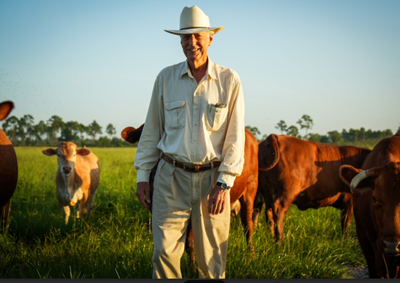
Charlie Lykes knew that he would be rewilding a piece of old Florida bordering Lake Placid when he bought a derelict citrus grove, and that’s exactly what the conservationist is doing with the help of the U.S. Fish and Wildlife Service and the Florida Conservation Group.
Lykes recently conveyed the Highlands County property as a 135-acre conservation easement to USFWS to preserve and restore the defunct groveland just set back from the lakeshore and adjacent to an existing wildlife management area.
The property was already noticed by developers along the fast-developing lakefront. But Lykes is determined to restore natural habitat and grasslands to graze cattle and has already begun the process by pulling up damaged citrus trees and invasive plants on the property.
“This is an important area at the headwaters of the Everglades, and I’m working to restore the sheet flow of water and replanting native plants and pasture grass to bring the wildlife back in,” Lykes said. “I intend to bring back the biodiversity, so ‘rewilding’ is a great term for it. Gopher tortoises, deer, turkey, wood ducks and sandhill cranes are already coming back.”
Rewilding is a form of ecological restoration aimed at increasing biological diversity and restoring natural processes. By returning prescribed fire to the landscape and replanting many native plant species, Lykes hopes to provide connectivity for wildlife in the area and to effectively buffer adjacent conservation land from encroaching development. Lykes also runs a cow-calf operation on the property.
The land is surrounded on its south and west sides by the Lake Wales Ridge Wildlife and Environmental Area (WEA), a 17,309-acre state-owned conservation area that is one of the largest areas of scrub habitat in the world. This WEA is situated within the Lake Wales Ridge, a region that was once ancient beach and dune systems, characterized by an abundance of native species due to its historic isolation from surrounding regions.
But urban encroachment is coming from Placid Lakes, a residential community southwest of the town of Lake Placid, and urban development already exists to the north of the property surrounding the WEA. Lakeshore homes exist on most of the western edge of Lake Placid where Lykes’ property is located.
The Lykes property also sits within the Everglades Headwaters National Wildlife Refuge and Conservation Area, an area explicitly designated by the U.S. Fish and Wildlife Service (USFWS) to protect the natural communities and the waters that make up the Headwaters to the Everglades. If it were to be converted to a more intensive land use than agriculture, the area would lose its wildlife connectivity and water flow capacity.
The agency’s interest in the land is shared by the Florida Conservation Group, as the property’s conservation is part of the group’s scientific strategy to conserve and improve water quality, hold water to reduce flooding, increase protected habitat for imperiled species, and protect the working landscape.
“This project coming into the Refuge system is a prime example of how successful partnerships can bring quality conservation to areas that are the most essential to preserve,” said Julie Morris, executive director of FCG. “Mr. Lykes and the USFWS shared a vision for this site, and we celebrate them for a successful collaboration.”
FCG worked with Lykes and USFWS to facilitate acquisition of the easement and continues to work with USFWS to achieve its goal of protecting 150,000 acres in the northern Everglades watershed.
“This property is a good fit for USFWS because it fills in a missing piece that helps protect Lake Placid, the ridge and the headwaters,” Lykes said. “I’m afraid that if someone else had bought this grove, it would already be developed. With this easement, I hope my grandchildren will enjoy seeing these places like I’ve seen in my life.”
